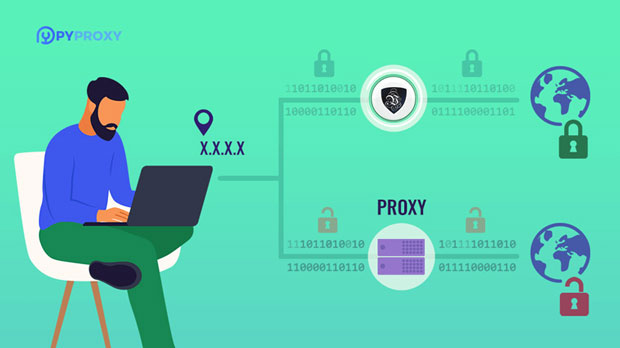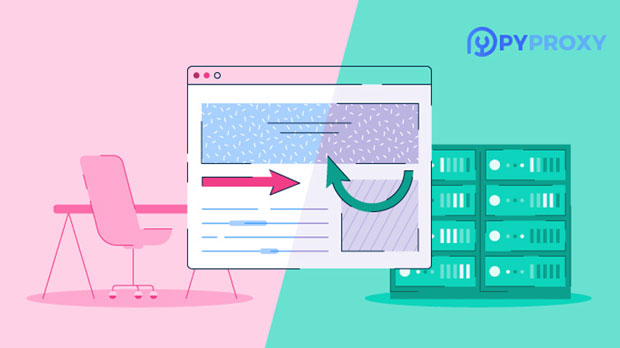What are the trends in the SOCKS Proxy IP market?
The SOCKS proxy ip market has been experiencing rapid growth, driven by the increasing demand for privacy, security, and unrestricted internet access. As businesses and individuals seek to protect their online activities, the need for reliable, anonymous browsing has skyrocketed. This trend is fueled by the rise in digital transformation, e-commerce, data mining, and the growing concern over cybersecurity and privacy. In addition, the global expansion of internet users and the constant need for high-speed and anonymous internet access for various online activities such as streaming, gaming, and market research are major drivers. The SOCKS proxy IP market is poised to evolve in several ways, with innovations, market segmentation, and technological advancements shaping its future. Introduction: Why SOCKS proxy ips are Gaining Popularity?SOCKS (Socket Secure) proxies are a powerful solution that helps individuals and organizations browse the internet securely and anonymously. They differ from traditional HTTP proxies by supporting all internet protocols, not just HTTP, allowing for a broader range of applications. The SOCKS proxy IP market has experienced significant growth as users seek privacy protection, enhanced security, and access to geo-restricted content. The development of this market is a direct response to global concerns over internet security, data privacy, and the increasing need for businesses to engage in anonymous online activities. The Rise in Demand for Privacy and AnonymityAs the internet becomes more integrated into daily life, privacy concerns continue to rise. From browsing history to online purchases and communication, users are becoming more aware of how their data is collected and used. This growing awareness is one of the key drivers behind the increasing demand for SOCKS proxies. SOCKS proxies offer the ability to mask a user's real IP address, providing anonymity while browsing. Whether for personal use, such as avoiding targeted advertising, or business use, such as preventing data scraping, the ability to remain anonymous is critical. As more individuals and organizations prioritize data protection and privacy, the market for SOCKS proxy IPs is expected to continue growing.Advancements in Technology and Market InnovationTechnological advancements play a critical role in the growth of the SOCKS proxy IP market. The introduction of socks5 proxies, which support enhanced encryption protocols and allow for more secure and reliable connections, has improved the overall user experience. With SOCKS5, users can secure their connections, bypass firewalls, and enjoy seamless browsing. Furthermore, advancements in artificial intelligence (AI) and machine learning (ML) have enhanced the ability of SOCKS proxy systems to detect and prevent malicious activities, offering more reliable and secure services.The development of new encryption techniques and the integration of multi-layer security measures further contribute to the evolution of the SOCKS proxy market. This makes SOCKS proxies an increasingly attractive option for businesses concerned about cybersecurity threats, such as hacking, phishing, and data breaches. As technology evolves, the SOCKS proxy market is expected to see further innovation, providing more secure, efficient, and scalable solutions to meet the demands of consumers and businesses alike.Growing Use Cases Across Different IndustriesThe versatility of SOCKS proxy IPs allows them to be used in a wide range of applications across various industries. For instance, in the e-commerce sector, businesses use SOCKS proxies to collect data from competitors, analyze market trends, and monitor online reviews while staying anonymous. In the digital marketing and advertising space, SOCKS proxies allow marketers to avoid fraud, bypass geographical restrictions, and conduct more effective campaign testing.The gaming industry has also embraced SOCKS proxies to reduce lag, bypass geo-restrictions, and ensure seamless online gaming experiences. Similarly, data scraping, SEO analysis, and web crawling are common applications in the research and business intelligence sectors. As more industries recognize the potential of SOCKS proxies to solve their specific challenges, the market continues to grow, with new use cases emerging regularly.Security Challenges and Growing Regulatory LandscapeWhile the growth of the SOCKS proxy IP market offers significant advantages, it also raises concerns regarding security and regulation. One of the primary challenges in the proxy industry is ensuring that proxy services are not used for illegal activities, such as hiding cybercriminal activities, data breaches, or accessing illicit content. With the increasing sophistication of cyberattacks, there is a need for stricter regulations to ensure that proxy services are used ethically and legally.Governments around the world are imposing tighter regulations on online activities, including internet access, data privacy, and cybersecurity. This has led to increased scrutiny of proxy services and a growing demand for accountability and transparency. For SOCKS proxy providers, staying compliant with these regulations is critical to avoid potential legal issues. As the regulatory landscape continues to evolve, the SOCKS proxy IP market will need to adapt to meet legal and ethical standards, ensuring both privacy and security are maintained.Market Segmentation: Geographical ExpansionThe SOCKS proxy IP market is not just expanding in traditional markets such as the United States and Europe. It is also seeing significant growth in emerging markets across Asia-Pacific, the Middle East, and Latin America. In these regions, internet penetration rates are rapidly increasing, and digital transformation is accelerating. As more businesses and individuals in these regions look for secure and private internet solutions, the demand for SOCKS proxies is expected to rise.In countries where internet censorship and surveillance are common, such as China, Russia, and Iran, SOCKS proxies are becoming an essential tool for bypassing firewalls and accessing restricted content. As internet access becomes increasingly essential in these regions, the demand for SOCKS proxies will continue to grow.Future Outlook: A Dynamic and Expanding MarketThe SOCKS proxy IP market is poised for significant growth in the coming years. As businesses and individuals continue to prioritize privacy, security, and the need to access the internet without restrictions, the demand for SOCKS proxies will likely increase. Technological advancements, such as the integration of AI and ML, will further enhance the capabilities of SOCKS proxies, making them more secure and efficient.Moreover, as more industries recognize the benefits of SOCKS proxies, the range of use cases will continue to expand, driving the market in new directions. However, the evolving regulatory landscape and the need for ethical and legal compliance will shape the development of the market. Providers must remain agile to navigate these challenges and ensure that they continue to meet the growing demands for privacy and security in the digital age.In conclusion, the SOCKS proxy IP market is experiencing rapid growth, driven by increasing concerns about privacy and security. As the market continues to expand, technological advancements and innovations will play a pivotal role in shaping its future. By understanding the current trends and challenges, businesses and individuals can make informed decisions about leveraging SOCKS proxies to meet their specific needs, ensuring a secure, anonymous, and unrestricted online experience.
2025-02-12

























































